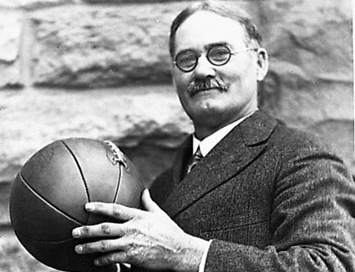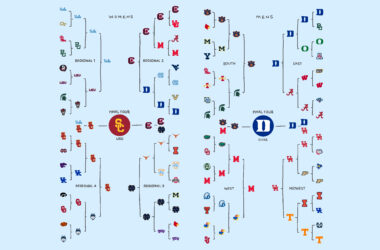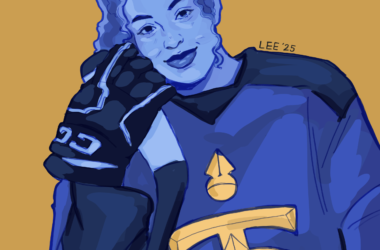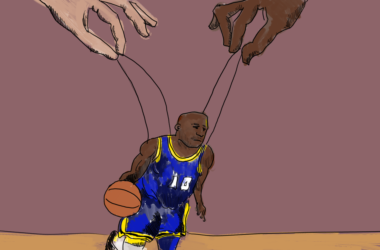McGill students are known for their ingenuity. Succeeding at this institution requires exceptional problem solving abilities. Dr. James Naismith, member of the McGill class of 1887, invented one of the more creative solutions to a problem, a solution that is now the seventh most popular sport in the world: Basketball.
On Dec. 21, 1891, Naismith was simply doing his job as a teacher at the Springfield YMCA gymnasium when he invented what would come to be known as basketball. The winter weather had kept his students from outdoor activities, and all other sports were too dangerous to be played indoors. Under orders from his superior at the time, Dr. Luther Gulick, Naismith was given 14 days to create an “athletic distraction” for his students, who were restless from constantly being indoors.
Naismith revisited his childhood activities and remembered a game called “duck on a rock.” This game was more about dexterity than strength and involved tossing small stones to knock over a large rock, known as “the duck,” from its place on a tree stump.
Newly inspired, Naismith retrieved a soccer ball and two peach baskets. He cleared the court, and mounted the baskets on opposite sides. He divided the students into two teams of nine and told them the goal was to get the ball in the basket. And so, “basket ball” came to fruition.
The original rules stipulated that the ball could be thrown or batted in any direction, but not with a closed fist. Additionally, most physical contact was banned as well as running with the ball. Infractions were punished with fouls that either removed a player from the game or gave points to the other team. Simplest of all, whichever team got the ball in the basket the most won.
The game grew in popularity as Naismith’s students continued playing and other schools began to look for indoor sports. As it spread through colleges, the game evolved, with additions such as backboards in 1895 and dribbling in 1901.
The game spread during the First World War, bringing basketball overseas. In 1919, the Inter-Allied Games were held following the end of the war, where 18 countries sent players to compete in the first official international basketball games.
In 1936, basketball became an Olympic sport, where Naismith threw the tip off and awarded the medals to the winning team. By 1949, the Basketball Association of America had merged with the National Basketball League to form the National Basketball Association, or the NBA.
Naismith’s accomplishments go far beyond the basketball court. At McGill, Naismith was also involved in football, soccer, gymnastics, and lacrosse. He was a three-year starter on the football team, in addition to participating in the first ever formal American football game. He also received the Wickstead Silver Medal and Wickstead Gold Medal for gymnastics in his junior and senior years.
In addition to his sporting achievements, Naismith was incredibly gifted in academics. He graduated top 10 in McGill’s class of 1887 with an Honours B.A. in Philosophy and Hebrew. After graduation, Naismith earned another degree in theology. This became one of 11 academic degrees he would receive, including an M.D. from Gross Medical College in 1898 and an honorary Doctor of Divinity from McGill in 1939.Naismith’s legacy is best summed up by a simple anecdote: When basketball was first created, his students urged him to call it “Naismith Ball.” Naismith refused and used the name he preferred: “Basket ball.” In the face of popularity, Naismith remained focussed on his initial task of solving a problem as simply as possible.








